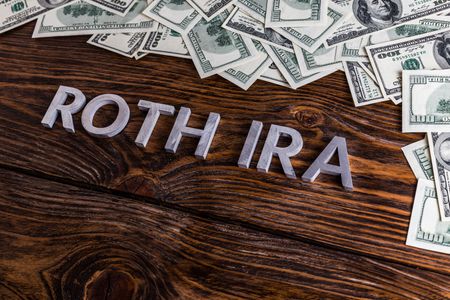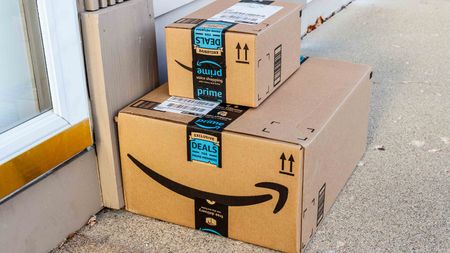New Rules for Light Bulbs Mean Lower Electric Bills
As federal energy provisions kick in, it means the end for inefficient light bulbs.

Chalk it up to progress, pollution control and energy security. In January, as more provisions of the Energy Independence and Security Act of 2007 kick in, Thomas Edison’s brilliant invention, the incandescent light bulb, will have to shape up or ship out. The old-style bulb is targeted for obsolescence because it converts just 10% of the electricity it uses into light and radiates the rest as heat.
Under the law, incandescents are not banned, nor are compact fluorescent (CFL) bulbs mandated as replacements. Manufacturers and wholesalers do have to meet new standards that are forcing them to improve the efficiency of incandescent bulbs or replace them with newer technologies.
The law phases in over the next two years, and the 100-watt bulb is the first victim. (California implemented the law a year ago.) The Department of Energy says that the average household that replaces 15 traditional incandescent bulbs will save $50 annually on its energy bill -- and the newer bulbs last longer.

Sign up for Kiplinger’s Free E-Newsletters
Profit and prosper with the best of expert advice on investing, taxes, retirement, personal finance and more - straight to your e-mail.
Profit and prosper with the best of expert advice - straight to your e-mail.
You have three main alternatives:
Halogen incandescents ($4 to $8 per bulb) offer energy savings of 25% and an expected life of up to three times longer than traditional incandescents -- plus a brightness level and light color comparable to that of traditional bulbs. Annual savings if you replace 15 60-watt incandescent bulbs: $19.50.
CFLs ($1.75 to $2, even after a spike in CFL prices after China restricted the supply of rare earth metals used in the bulbs) offer energy savings of 75% and last ten times longer than old-fashioned bulbs. Annual savings: $54.
Light-emitting diodes, or LEDs ($10 to $26), provide an average energy savings of 75% to 80% and last up to 25 times longer. Annual savings: $57. LEDs are pricey, but costs will drop as more products come to market.
Get Kiplinger Today newsletter — free
Profit and prosper with the best of Kiplinger's advice on investing, taxes, retirement, personal finance and much more. Delivered daily. Enter your email in the box and click Sign Me Up.

-
 Retire in Mexico: Get a Lower Cost of Living Near the US
Retire in Mexico: Get a Lower Cost of Living Near the USMany older Americans retire in Mexico because of its laid-back lifestyle, beaches, and vibrant culture. Here’s the scoop on living in Mexico full-time.
By Brian O'Connell Published
-
 Financial Fact vs Fiction: This Roth Conversion Myth Could Cost You
Financial Fact vs Fiction: This Roth Conversion Myth Could Cost YouWhile some 'golden rules' stay in style forever, the financial landscape is constantly evolving. Here are five common myths to revisit (with more on the way).
By Scott McClatchey, CFP® Published
-
 Roth IRA Contribution Limits for 2025
Roth IRA Contribution Limits for 2025Roth IRAs Roth IRA contribution limits have gone up. Here's what you need to know.
By Jackie Stewart Last updated
-
 How to Find Foreclosed Homes: Best Foreclosure Listings Sites
How to Find Foreclosed Homes: Best Foreclosure Listings SitesMaking Your Money Last Find foreclosed homes for sale on these foreclosure listing websites. Search for properties on these free, paid or government sites.
By Bob Niedt Last updated
-
 Luxury Home Prices Rise as the Rich Dodge High Mortgage Rates
Luxury Home Prices Rise as the Rich Dodge High Mortgage RatesLuxury home prices rose 9% to the highest third-quarter level on record, Redfin reports, growing nearly three times faster than non-luxury prices.
By Kathryn Pomroy Published
-
 Four Tips for Renting Out Your Home on Airbnb
Four Tips for Renting Out Your Home on Airbnbreal estate Here's what you should know before listing your home on Airbnb.
By Miriam Cross Published
-
 Five Ways to a Cheap Last-Minute Vacation
Five Ways to a Cheap Last-Minute VacationTravel It is possible to pull off a cheap last-minute vacation. Here are some tips to make it happen.
By Vaishali Varu Last updated
-
 How to Figure Out How Much Life Insurance You Need
How to Figure Out How Much Life Insurance You Needinsurance Instead of relying on rules of thumb, you’re better off taking a systematic approach to figuring your life insurance needs.
By Kimberly Lankford Last updated
-
 Amazon Big Deal Days Is Coming! We’ve Got All the Details
Amazon Big Deal Days Is Coming! We’ve Got All the DetailsAmazon Prime To kick off the holiday season with a bang, Amazon Big Deal Days runs Tuesday, October 8 and Wednesday, October 9.
By Bob Niedt Last updated
-
 How to Shop for Life Insurance in 3 Easy Steps
How to Shop for Life Insurance in 3 Easy Stepsinsurance Shopping for life insurance? You may be able to estimate how much you need online, but that's just the start of your search.
By Kaitlin Pitsker Last updated